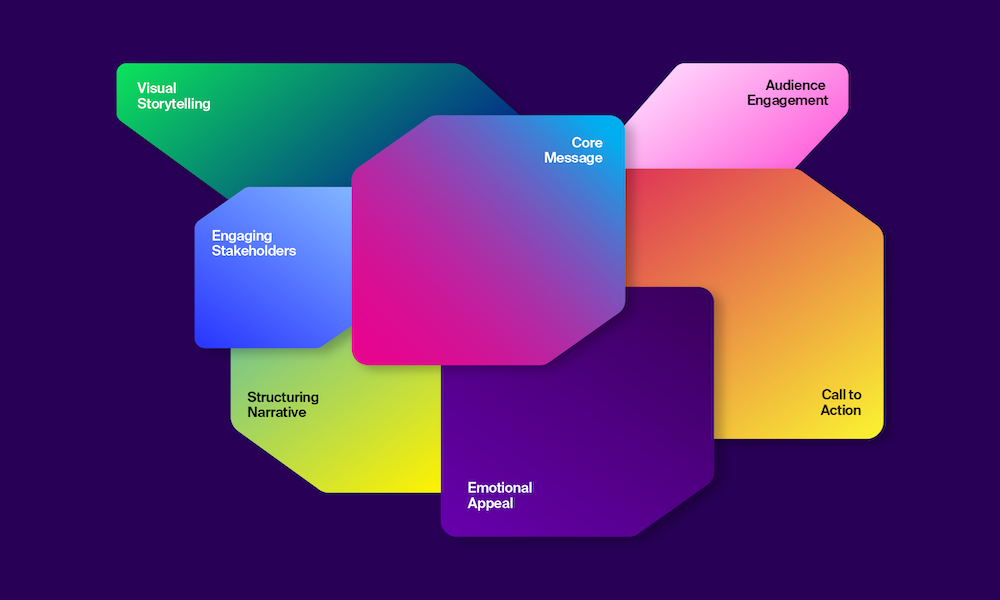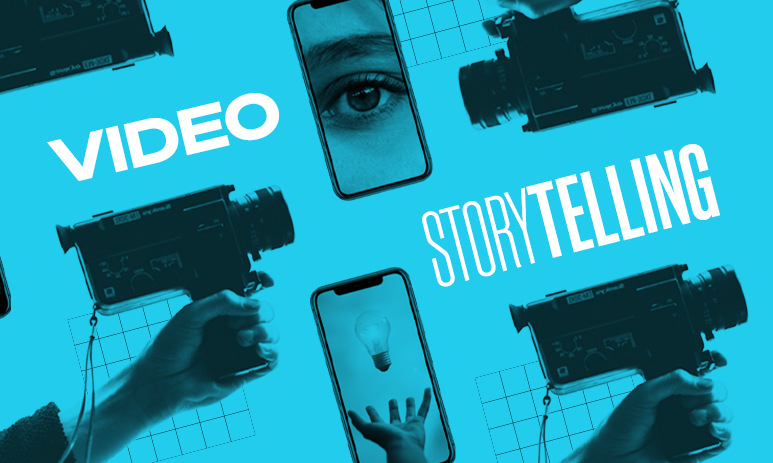Storytelling Techniques for Impactful Communication
Related Services
Credits

Storytelling is the bridge that connects audiences to causes, creating a profound impact that goes beyond mere communication.
At Pastilla, we’ve honed our expertise in weaving narratives for a myriad of causes, from civic organizations, nonprofits, and foundations to corporate social responsibility initiatives.
Our commitment? To craft campaigns that don’t just promote but genuinely connect and resonate. Whether it’s a city’s initiative to tackle climate change, a foundation’s mission, or a brand’s social responsibility drive, we ensure the story strikes a chord.
Identifying the Core Message: What Is the Mission?
Every cause-driven initiative, whether a nonprofit, a civic organization, or a corporate social responsibility campaign, thrives on a clear and compelling core message. At Pastilla, we refer to this as the “positioning statement.” This statement isn’t just a tagline but a beacon guiding all communication efforts. It should be clear and urgent, and answer the questions: Why now? Why us? And, why you, the audience?
For instance, when we worked with PlayLA, a radically inclusive athletic movement led by a collaboration between the LA28 Olympic and Paralympic Games, the City of LA Department of Recreation & Parks, and Mayor Eric Garcetti’s office, the positioning was laser-focused. The outcome? “We’re All In!” This tagline resonated with the essence of uniting communities beyond just the LA28 Games, emphasizing character-building over competition.
Such a positioning statement helps organizations like PlayLA stand out, conveying not just their mission but also their unique value and role in the larger narrative of social impact.
The Importance of a Clear and Concise Call-to-Action
In the vast realm of cause communication, a clear call-to-action (CTA) serves as a beacon, guiding supporters toward meaningful engagement. A well-crafted CTA not only instructs but also inspires, creating a bridge between the audience’s aspirations and the organization’s mission.
Returning to Pastilla’s collaboration with PlayLA, the tagline “We’re All In!” served as a CTA that resonated deeply, emphasizing unity and community, and showcased the essence of the program – prioritizing the health and success of future generations. Such CTAs are not mere instructions; they’re invitations to be part of a larger narrative.
Structuring Your Narrative
In the realm of cause communication, the narrative structure plays a pivotal role. While many are familiar with the classic “Hero’s Journey,” where a protagonist embarks on an adventure, faces challenges, and returns transformed, there’s a twist when it comes to nonprofit storytelling. Enter the “You-Centered Communication.”
In this approach, the audience isn’t just a passive observer; they are the hero. The story isn’t about the organization’s achievements alone but about the collective impact made possible by the audience’s involvement. It’s about your ability to make a difference, your role in the mission, and the change you can bring about.
By using direct language like “you” and “your,” the narrative becomes more engaging and personal. It shifts the focus from what the organization can do on its own to the transformative power of collective action. This approach not only empowers the audience but also fosters a deeper connection, making them an integral part of the mission’s success story.
Emotional Appeal: Evoking Empathy and Connection
Emotions are the universal language that transcends boundaries and connects hearts. In the realm of cause communication, tapping into these emotions can amplify the impact of your message manifold. One of the most potent tools in this regard is the use of testimonies. Sharing real-life stories of those who have been directly affected by the organization’s work not only authenticates the message but also humanizes it.
Imagine reading about a child who, thanks to a nonprofit’s educational program, became the first in her family to attend college. Or a community that, with the support of a foundation, transformed a barren land into a thriving green space. These stories resonate because they are real, tangible, and relatable. They evoke empathy, inspire action, and reinforce the belief that every contribution, no matter how small, can make a significant difference.
For organizations looking to strengthen their emotional appeal, it’s essential to:
- Collect and curate genuine testimonies from beneficiaries.
- Integrate these stories seamlessly into the broader narrative.
- Use visuals, where possible, to enhance the emotional quotient of the story.
By making emotions the cornerstone of your storytelling, you not only engage the audience but also inspire them to become a part of the change narrative.
Visual Storytelling through Photography
In the digital age, where attention spans are dwindling, the adage “a picture is worth a thousand words” has never been more relevant. Photography, in particular, has the power to capture moments, emotions, and stories in a way that words sometimes can’t. For cause communication, the right photograph can instantly convey the depth of a situation, the joy of a success story, or the urgency of a call to action.
For instance, consider the heartwarming image of a community coming together to plant trees or the poignant photograph of a child studying under a streetlight. Such visuals not only enhance the narrative but also make it more relatable and memorable. At Pastilla, we’ve had the privilege of working with various organizations, capturing and curating photographs that amplify their message.
Infographics, Videos, and Multimedia Storytelling
While photographs capture moments, infographics, videos, and other multimedia elements help visualize the broader impact and the journey. They break down complex data into digestible chunks, making it easier for the audience to grasp the magnitude of the change or the depth of the challenge. For instance, our work with Clean Power Alliance (CPA) involved creating compelling infographics that communicated the tangible benefits of clean energy. Such visuals not only inform but also inspire action, making them indispensable tools in the storytelling arsenal.
Engaging Stakeholders
In the world of cause communication, one size certainly doesn’t fit all. Different stakeholders have different motivations, challenges, and aspirations. Recognizing and addressing these unique perspectives is crucial for effective engagement – no one message fits all.
Donors, for instance, might be driven by the impact of their contributions. They want to see where their money goes and the tangible change it brings about. Crafting narratives that highlight success stories, backed by data, can resonate deeply with this group. Volunteers, on the other hand, are often motivated by a sense of purpose and community. They want to feel a part of something bigger. Sharing stories of on-ground experiences, challenges overcome, and the camaraderie among volunteers can strike a chord with them. Beneficiaries need to know that they are understood, respected, and supported. Narratives for this group should be empathetic, focusing on empowerment and positive change.
At the heart of these tailored narratives lies effective audience segmentation. By understanding the nuances of each segment, organizations can craft messages that resonate, inspire, and mobilize. At Pastilla, we pride ourselves on our ability to dive deep into audience insights, ensuring that every story told is not just heard, but felt.
The Agency’s Role in Audience Engagement
In the vast landscape of cause communication, standing out and genuinely connecting with audiences is a challenge. This is where Pastilla steps in, acting as a bridge between nonprofits and their diverse stakeholders. Our expertise isn’t just about crafting compelling narratives; it’s about ensuring those narratives reach the right ears and evoke the desired response.
One of our standout strategies involves data-driven audience analysis. By understanding who the audience is, what drives them, and how they consume content, we can tailor messages that resonate on a personal level. For instance, with a nonprofit focused on youth empowerment, we might leverage social media campaigns, knowing well that younger audiences are active there. The content would be vibrant, relatable, and shareable, encouraging organic reach and engagement.
Another strategy is our interactive storytelling workshops. Here, we collaborate directly with nonprofits, delving deep into their missions, challenges, and success stories. These sessions often lead to the birth of unique storytelling angles, ensuring the message is both authentic and impactful.
Pastilla’s commitment goes beyond just creating content. We’re dedicated to ensuring that every story told not only reaches its intended audience but also inspires action. After all, in the world of social impact, a story well told can be the catalyst for meaningful change.
Conclusion
Storytelling is an art, but when wielded effectively in the realm of cause communication, it becomes a powerful tool for change. Throughout this article, we’ve explored the nuances of crafting compelling narratives, the significance of visuals, and the importance of tailoring messages to resonate with diverse audiences. Beyond just telling a story, it’s about making an impact, evoking emotions, and driving action.
Pastilla’s commitment to this craft is unwavering. Our dedication isn’t limited to nonprofits alone; we extend our expertise to civic organizations, foundations, corporate social responsibility initiatives, and any entity driven by a mission to make a difference. Our goal? To amplify your voice, enhance your message, and ensure your story not only gets heard but also inspires.
